Heartbeat sensor provides a simple way
to study the function of the heart which can be measured based on the
principle of psycho-physiological signal used as a stimulus for the
virtual- reality system. The amount of the blood in the finger changes
with respect to time.
The sensor shines a light lobe (a small very bright LED) through the ear and measures the light that gets transmitted to the Light Dependent Resistor.
The amplified signal gets inverted and filtered, in the Circuit. In
order to calculate the heart rate based on the blood flow to the
fingertip, a heart-rate sensor is assembled with the help of LM358 OP-AMP for monitoring the heartbeat pulses.
Features of Heartbeat Sensor
- Indicates heartbeat by a LED
- Provides a direct output digital signal for connecting to a microcontroller
- Possesses compact Size
- Works with a working Voltage of +5V DC
Primary Applications of Heartbeat Sensor
- Works as a Digital Heart Rate monitor
- Works as a Patient Health Monitoring System
- Used as a Bio-Feedback control of robotic applications
Working of a Heartbeat Sensor
The heart beat sensor circuit
diagram comprises a light detector and a bright red LED. The LED needs
to be of super bright intensity because maximum light passes and spreads
if a finger placed on the LED is detected by the detector.
Now, when the heart pumps blood through
the blood vessels, the finger becomes slightly more opaque; due to this,
less amount of light reaches from the LED to the detector. With every
heart pulse generated, the detector signal gets varied. The varied
detector signal is converted into an electrical pulse. This electrical
signal gets amplified and triggered through an amplifier which gives an
output of +5V logic level signal. The output signal is also directed by a
LED display which blinks on each heartbeat rate.
Let us understand about its primary
application by considering a project as a practical example with the
help of a heartbeat sensor.
Wireless Health Monitoring System for Patients
The main purpose of this automatic
health system is to monitor the body temperature, heart rate and pulse
rate of a patient and display the same to the doctor by using RF
technology.
In hospitals, patients’ body
temperatures and heartbeat rates need to be monitored regularly, which
is usually done by doctors or other paramedical staff. They observe the
body temperature and heartbeat rates (whether 72 times per minute). The
doctors and other hospital management staff keep a record of the body
temperature and heartbeats of every patient.
This health monitoring system project includes various components such as an 8051 microcontroller,
a 5V regulated power supply unit, a temperature sensor, a heartbeat
sensor, an RF transmitter, a receiver module and a LCD display. The
microcontroller is used as the brain of the entire project for
monitoring the heartbeat, pulse rate, and body temperature of patients.
The working of this monitoring system project is illustrated with the
help of a block diagram, which includes various blocks such as a
power-supply block that supplies power to the whole circuit, a temperature sensor that calculates patients’ body temperature, and a heartbeat sensor for monitoring heartbeats of the patients.
In the transmitter section, the
temperature sensor is used to read the body temperature of the patients
continuously and the heart beat sensor for monitoring the heartbeats’
rate of the patients, and then the data is sent to the 8051
microcontroller. The data gets transmitted first, and then encoded into
serial data through the air by a Radio Frequency module.
The body temperature of the patients and heartbeat pulses per minute
are displayed on the LCD display. With the help of an RF antenna placed
at the transmitter end, the data is transmitted to the receiver section.
In the receiver section, a receiver is
placed at the other end to receive the data and the received data is
decoded by using a decoder, and the transmitted data (body temperature,
heartbeat pulses) is compared with the data stored in the
microcontroller, and then the resultant data gets displayed on the LCD
screen. The receiver RF module placed at the doctor’s partition
continuously reads the Patient health conditions such as body
temperature, heart rate and pulse rate, and displays the result on the
LCD, wirelessly.
Digital Heartbeat Monitor Using Microcontroller
The project is designed in such a way to
monitor the heartbeat rate measurement using a microcontroller with the
help of a heartbeat sensor.
Circuit Description: The heartbeat sensor circuit diagram is based on an AT89S52 microcontroller and other components such as heartbeat sensor, power supply, crystal oscillator circuit, resistors, capacitors and LCD display.
Digital Heartbeat Monitor Circuit Diagram
The AT89S52 microcontroller is the most popular microcontroller
selected from a family of 8051 microcontroller. An 8-bit
microcontroller is used for controlling all the operations of the
circuit. It also controls the heartbeat pulses generated from the
heartbeat sensor.
This project makes use of a heartbeat
sensor used for controlling the heartbeat pulses of the heart patients.
Moreover, LCDs are used for display. An AT89S52 Microcontroller is used
for continuously monitoring the heartbeat rate and pulse rate of the
patient which are done by taking into consideration the embedded C programming
done in microcontroller by using KEIL software. The entire circuit gets
power from the different blocks like voltage regulator and step- down transformer, used in the power supply circuit. The voltage regulator produces a constant output voltage of 5 Volts.
Components Used:
AT89S52 Microcontroller: The device used in this project is ‘AT89S52’, which is a typical 8051 microcontroller
produced by Atmel corporation.This Microcontroller is the most
important fragment of this project as it controls all the operations of
the circuit such as reading heartbeat rate pulses data from the
heartbeat sensor.
Power Supply: This
power supply block consists of a step-down transformer, a bridge
rectifier, a capacitor and a voltage regulator. Single-phase Active
Current power supply from the mains is step down to a lower voltage
range which is again rectified to Direct Current by using a bridge rectifier.
This rectified Direct Current is filtered and regulated to the whole
circuit operating range with a capacitor and voltage regulator IC,
respectively.
LCD: Most of the projects make use of LCD displays
for displaying information like heartbeat rate, body temperature, etc.
There are various displays used in projects such as seven-segment
displays and LED displays. Selection of display depends on considering
these parameters: cost of displays, power consumption and ambient
lighting conditions.
Resistors: Resistance
is well-defined as the ratio of voltage applied across its terminals and
current passing through it. The resistor value depends on a fixed
voltage that limits the current passing through it. Resistor is a passive component used for controlling the current in an electronic circuit.
Capacitors: The main
purpose of a capacitor is to store charge. The product of the
capacitance value and the voltage applied across a capacitor is equal to
the charge stored in the capacitor.
Crystal Oscillator: A
Crystal oscillator circuit is a type of electronic circuit that makes
use of the mechanical resonance of a vibrating circuit used for
generating electrical signals by varying the frequency. An AT89S52
microcontroller controls the crystals for synchronizing its operation.
The type of synchronization made in this circuit is known as machine
cycle.
Circuit Operation
- In this system, a crystal oscillator circuit is connected between the pins 18 and 19 of the AT89S52 microcontroller used for operating the instructions sets at a various clock frequency range. A machine cycle is used to measure the minimum time for executing the single instruction set.
- Reset circuit is connected to the pin 9 of the AT89S52 microcontroller with the help of a capacitor and resistor. The resistor’s other end is connected to the Ground (20pin) and the capacitor’s other end is connected to the (EA/Vpp) 31 pin. The resistor and capacitor are connected in such a way that they perform a reset mode of operation manually. If the switch gets closed, then the reset pin is set high.
- Heart beat sensor connected to the port1.0 pin of the microcontroller is used for monitoring the pulses of the heart, and these pulse signals are sent to the microcontroller and compared with the programmed data stored in the microcontroller by using Keil software. Whenever the input’s heart rate pulses are received, the counter in the microcontroller counts these pulses for certain time period.
- LCD Displays are connected to the port 2 pins of the AT89S52 microcontroller. The time duration of one heartbeat’s pulse will be one sec, and by dividing 60,000 by 1000 we will have the appropriate result as 60, which will then be displayed on LCD.
This is all about the heartbeat sensor
and its working with relevant applications and practical examples in
detail. Furthermore, for any queries regarding this topic or on the
electrical and electronic projects us by commenting in the comment section given below.



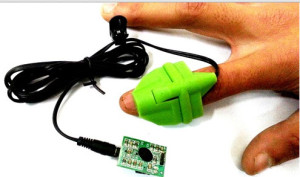
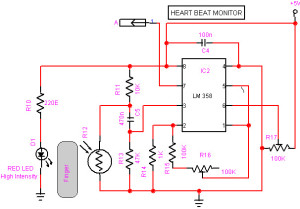
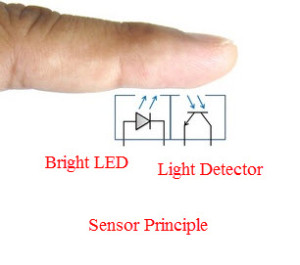
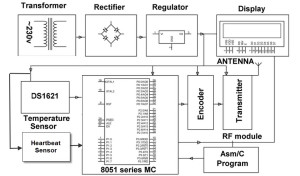
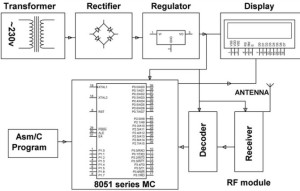
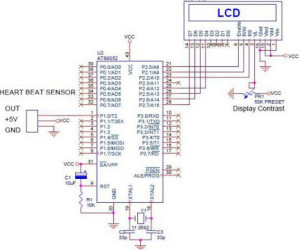




No comments:
Post a Comment